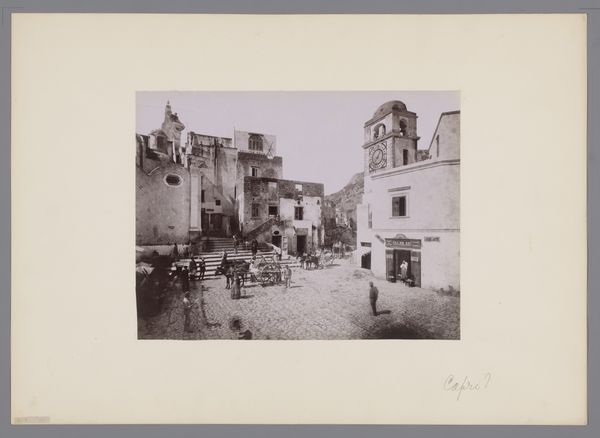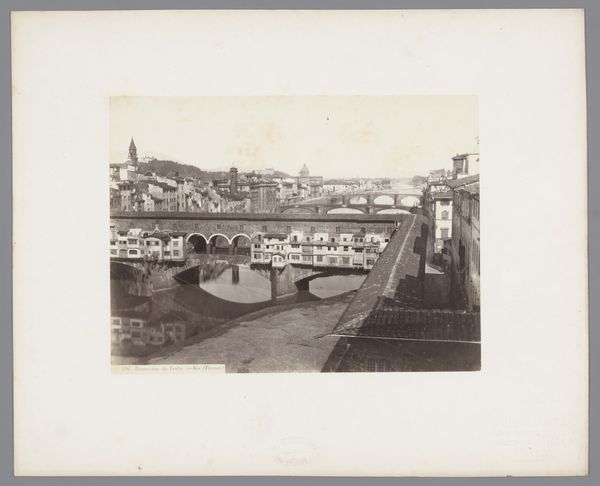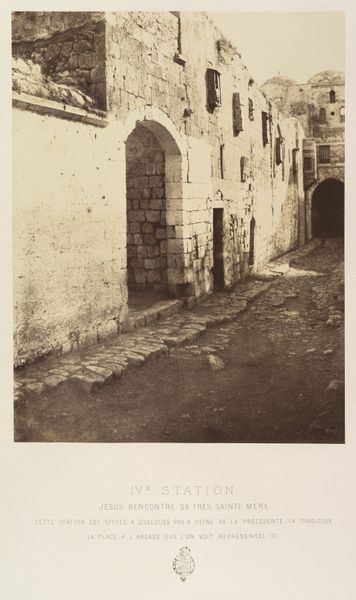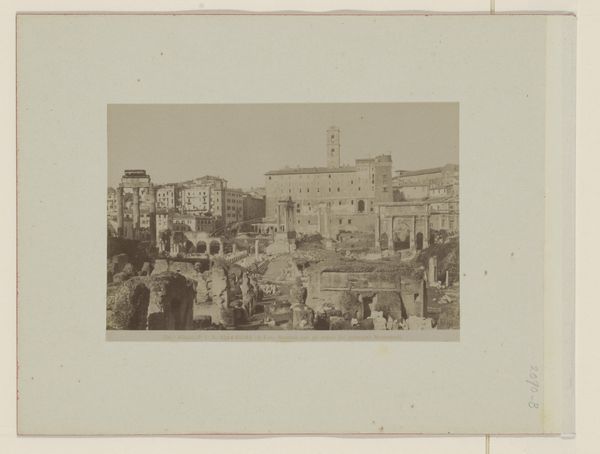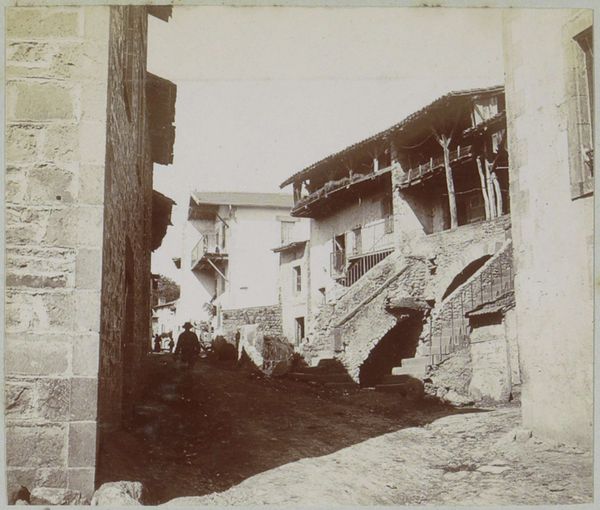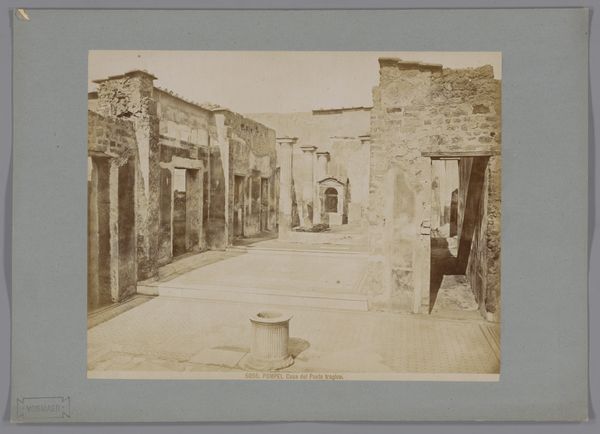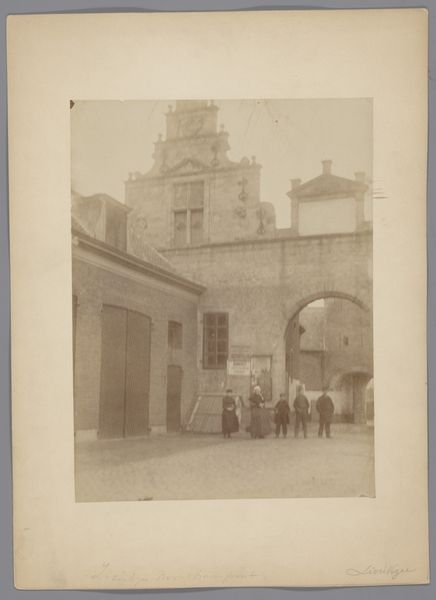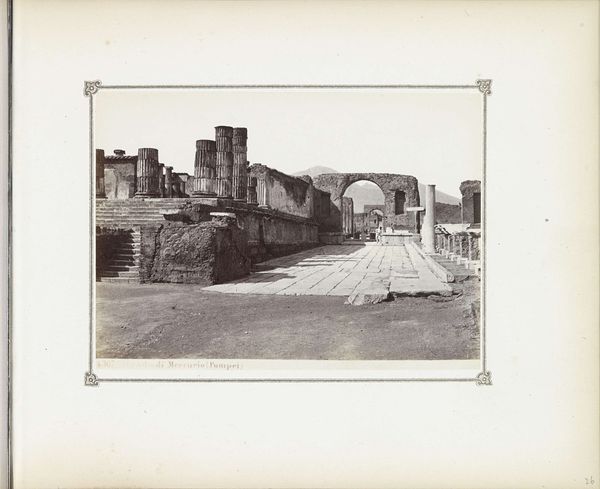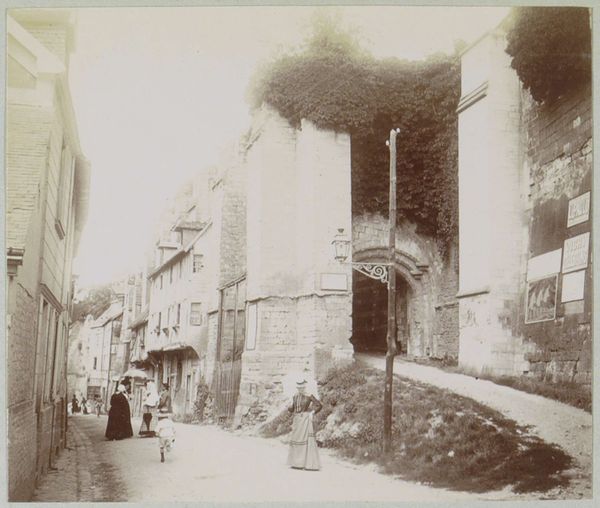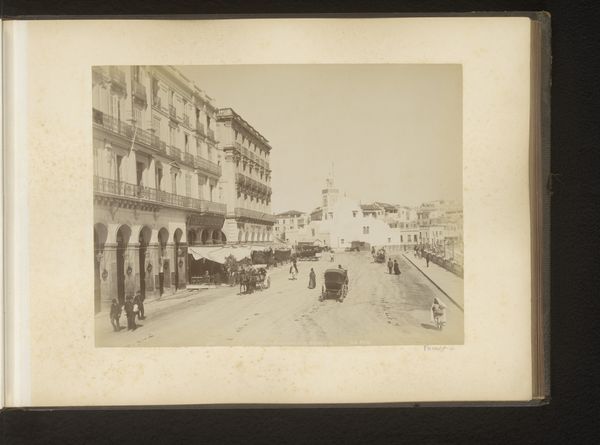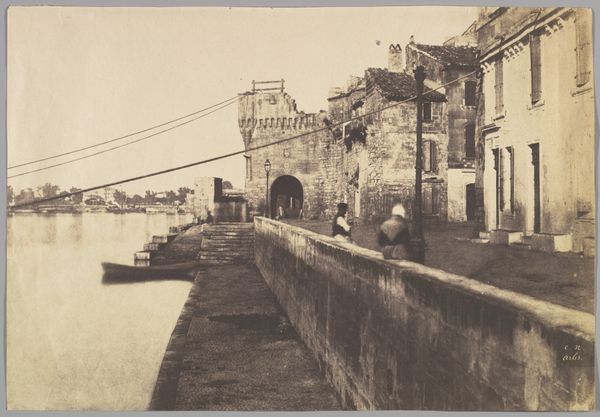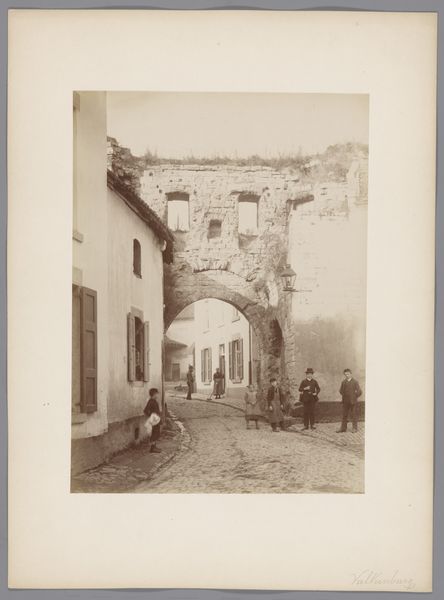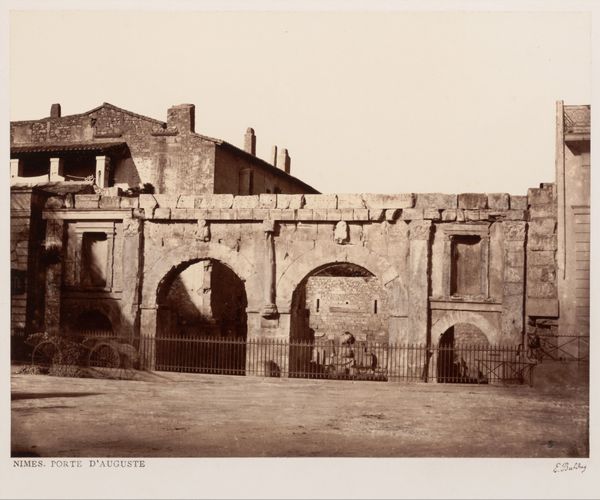
photography, gelatin-silver-print
#
landscape
#
archive photography
#
photography
#
gelatin-silver-print
#
cityscape
#
realism
Dimensions: height 253 mm, width 337 mm
Copyright: Rijks Museum: Open Domain
Curator: Juan Laurent's photograph, "Sevilla-El postigo del aceite y muralla antigua," probably taken sometime between 1857 and 1880, gives us a compelling look at a Sevilla street. Editor: It’s captivating how the artist used a gelatin silver print to make visible the layered tonality and geometry in this city landscape! The light almost seems to vibrate off the walls. Curator: Yes, and that interplay of light and shadow shapes our understanding of this particular site—the old city wall near El Postigo del Aceite in Seville. In its time, it might be an index of modernity's gaze encountering tradition and history, but the result is not a simple contrast. This sector was an entry point of goods to the city, what does it mean today, and who does the old wall serve, and what purpose did it serve back then? Editor: Structurally, I am interested in how Laurent uses a central archway and arranges a symmetrical structure, but interrupts it with an asymmetry on the side: the building to the left appears cropped and we cannot grasp its compositional role here. Curator: It points toward urban change. The image prompts reflection on transformations within Seville's urban fabric, the function and symbolism of walls in shaping a society across generations, and also considers trade practices embedded within historical contexts. This photo prompts the exploration of urbanity, class and labor. The presence of people gives the photo its character, what is the story of people here? Editor: Yes, exactly. But from a visual standpoint, the soft greyscale of the gelatin silver beautifully flattens the scene; and creates a harmonious interplay of lines which invite the eyes. The textural details in the stone against the rendered luminosity is captivating. Curator: By examining such images we can engage with the historical, political, and economic shifts that defined 19th-century urban landscapes in Spain. I think by contrasting historical analysis with material assessment we better position viewers and let them come to their own conclusion. Editor: Indeed. Thinking of composition and structure, in the photo’s formal arrangement, we gain deeper insights into the dynamics between past and present and its visual vocabulary.
Comments
No comments
Be the first to comment and join the conversation on the ultimate creative platform.
